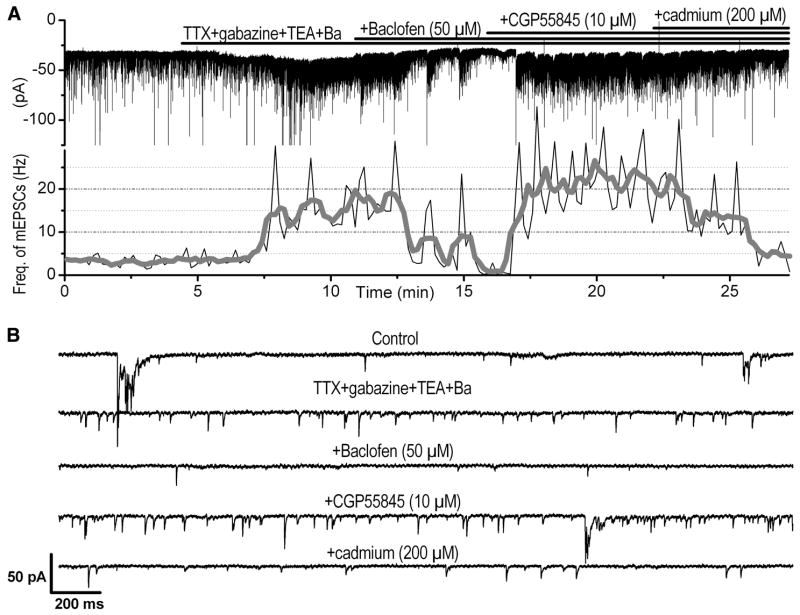FIG. 5.
Baclofen reduces the frequency of action potential–independent EPSCs [miniature (m)EPSCs]. A, top: current trace of a short axon (SA) cell recorded in voltage clamp at HP = −70 mV with inward deflections, indicating the occurrence of spontaneous EPSCs. The pipette intracellular solution contains cesium and QX-314 (see methods for details). Bottom: corresponding histogram of the frequency of EPSCs throughout the experiment. The histogram was first constructed using a bin width of 10 s (thin line), and then it was further smoothed using adjacent averaging of 5 data points. The histogram was normalized to the bin width to reflect the mean frequency of EPSCs. Note that the increase or decrease in EPSCs was associated with a slight inward or outward current, respectively, suggesting that background EPSC frequency level might contribute to the mean current level. B: sample current traces shown at extended timescale (3 s each) under different pharmacological conditions corresponding to the recording shown in A. Application of the blockers (TTX, 1 μM; gabazine, 10 μM; TEA, 10 mM; barium chloride, 1 mM) significantly increased the EPSC frequency, which became highly irregular. The TTX-resistant mEPSCs were inhibited by baclofen and this effect was reversed by additional application of the GABAB-R blocker CGP55845. Further addition of the calcium channel blocker cadmium blocked most of the mEPSCs.

